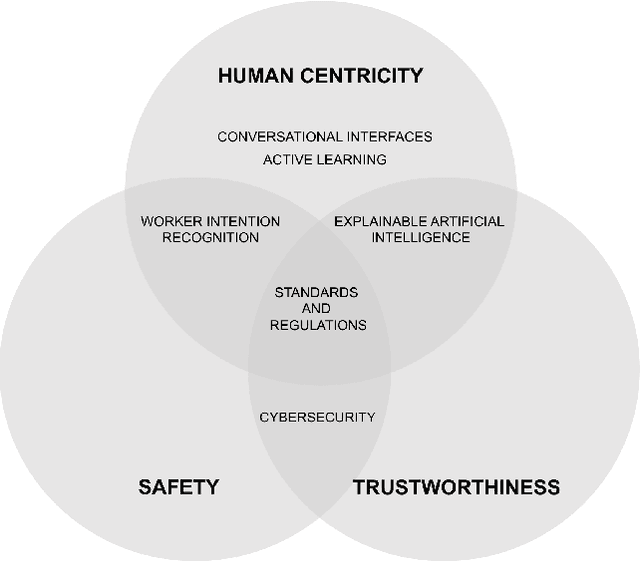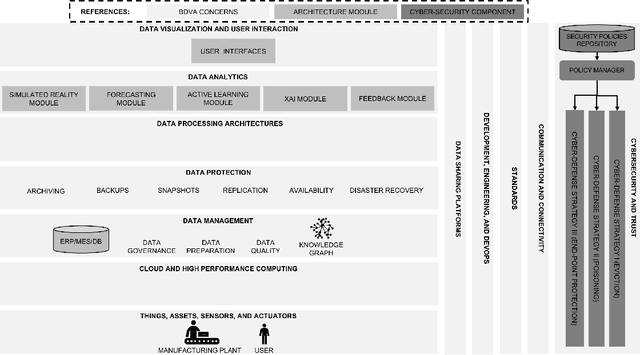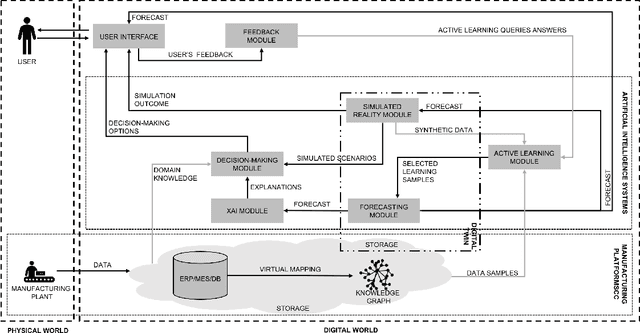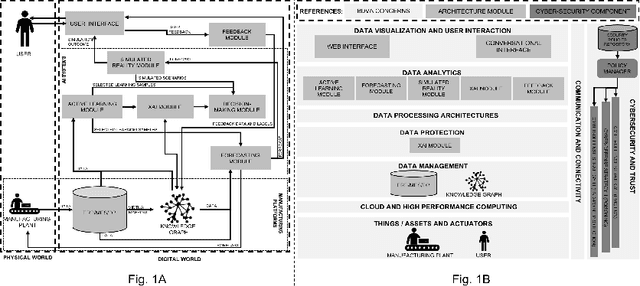Thanassis Giannetsos
Human in the AI loop via xAI and Active Learning for Visual Inspection
Jul 17, 2023Abstract:Industrial revolutions have historically disrupted manufacturing by introducing automation into production. Increasing automation reshapes the role of the human worker. Advances in robotics and artificial intelligence open new frontiers of human-machine collaboration. Such collaboration can be realized considering two sub-fields of artificial intelligence: active learning and explainable artificial intelligence. Active learning aims to devise strategies that help obtain data that allows machine learning algorithms to learn better. On the other hand, explainable artificial intelligence aims to make the machine learning models intelligible to the human person. The present work first describes Industry 5.0, human-machine collaboration, and state-of-the-art regarding quality inspection, emphasizing visual inspection. Then it outlines how human-machine collaboration could be realized and enhanced in visual inspection. Finally, some of the results obtained in the EU H2020 STAR project regarding visual inspection are shared, considering artificial intelligence, human digital twins, and cybersecurity.
Human-Centric Artificial Intelligence Architecture for Industry 5.0 Applications
Mar 21, 2022



Abstract:Human-centricity is the core value behind the evolution of manufacturing towards Industry 5.0. Nevertheless, there is a lack of architecture that considers safety, trustworthiness, and human-centricity at its core. Therefore, we propose an architecture that integrates Artificial Intelligence (Active Learning, Forecasting, Explainable Artificial Intelligence), simulated reality, decision-making, and users' feedback, focusing on synergies between humans and machines. Furthermore, we align the proposed architecture with the Big Data Value Association Reference Architecture Model. Finally, we validate it on two use cases from real-world case studies.
STARdom: an architecture for trusted and secure human-centered manufacturing systems
Apr 02, 2021
Abstract:There is a lack of a single architecture specification that addresses the needs of trusted and secure Artificial Intelligence systems with humans in the loop, such as human-centered manufacturing systems at the core of the evolution towards Industry 5.0. To realize this, we propose an architecture that integrates forecasts, Explainable Artificial Intelligence, supports collecting users' feedback, and uses Active Learning and Simulated Reality to enhance forecasts and provide decision-making recommendations. The architecture security is addressed as a general concern. We align the proposed architecture with the Big Data Value Association Reference Architecture Model. We tailor it for the domain of demand forecasting and validate it on a real-world case study.
 Add to Chrome
Add to Chrome Add to Firefox
Add to Firefox Add to Edge
Add to Edge